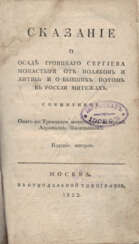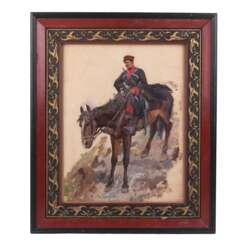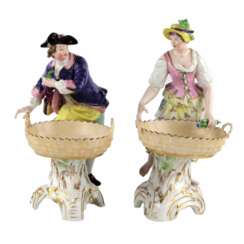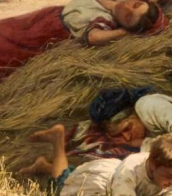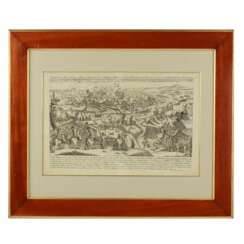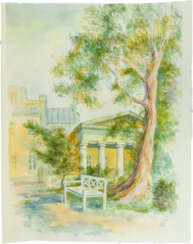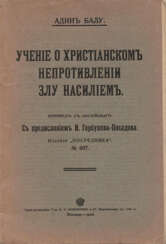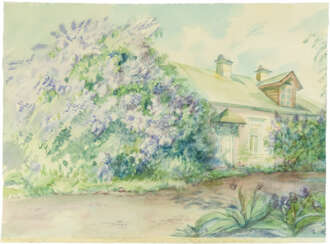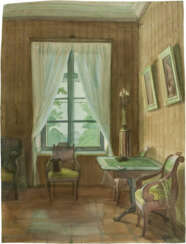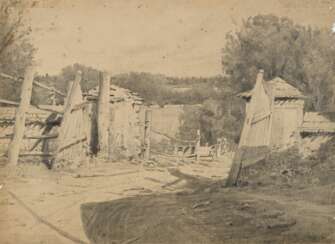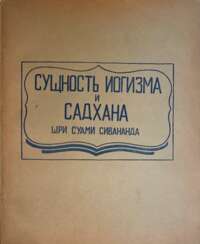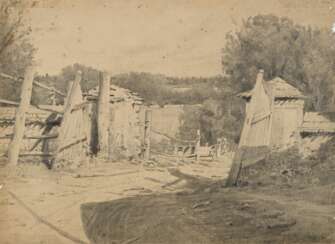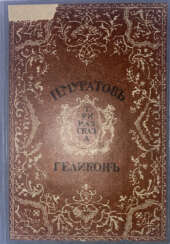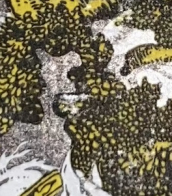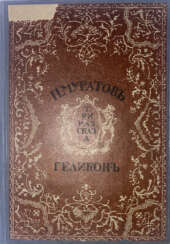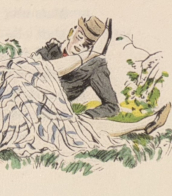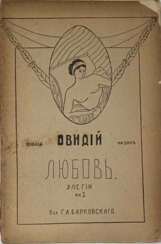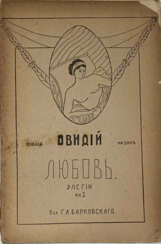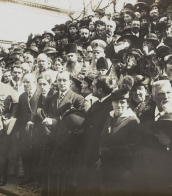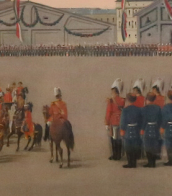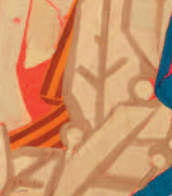860 Items by auctions and galleries:
сад
Lot 18 [Мирбо, О.] Mirbeau, O. Le jardin des supplices / Par Octave Mirbeau [Сад пыток].
Auction 20. Rare books, inscriptions and graphics of the 18th-20th centuries. 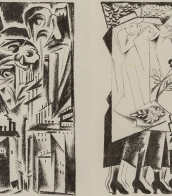

Аукционный дом «Жар-Птица»
Auction 20. Rare books, inscriptions and graphics of the 18th-20th centuries.
Date: 12.02.2022 17:00 UTC +03:00
Number of lots in the catalog: 127
Lot 19 [Мирбо, О.] Mirbeau, O. Le jardin des supplices / Par Octave Mirbeau [Сад пыток].
Аукцион 21-1. Редкие книги, рукописи, фотографии и графика XVIII—ХХ вв. 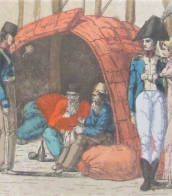

Аукционный дом «Жар-Птица»
Аукцион 21-1. Редкие книги, рукописи, фотографии и графика XVIII—ХХ вв.
Date: 04.09.2022 16:00 UTC +03:00
Number of lots in the catalog: 205
Lot 26 [Мирбо, О.] Mirbeau, O. Le jardin des supplices / Par Octave Mirbeau [Сад пыток].
Аукцион 22. Редкие книги, инскрипты, рукописи, открытки и фотографии XVIII—XX вв. 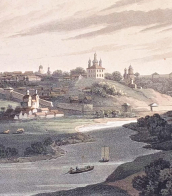

Аукционный дом «Жар-Птица»
Аукцион 22. Редкие книги, инскрипты, рукописи, открытки и фотографии XVIII—XX вв.
Date: 07.10.2023 17:15 UTC +03:00
Number of lots in the catalog: 238
Lot 33 Пащенко, А.С. Киев. Фонтан в пролетарском саду. 1945. Бумага, цв. линогравюра. 46х31,7 см.
Auction 18-2. Ukrainian graphics of the twentieth century. 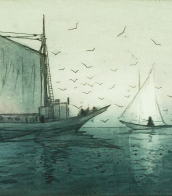

Аукционный дом «Жар-Птица»
Auction 18-2. Ukrainian graphics of the twentieth century.
Date: 29.11.2021 20:30 UTC +03:00
Number of lots in the catalog: 73
Lot 65 Курбатов, В.Я. Сады и парки / В.Я. Курбатов.
Аукцион 22. Редкие книги, инскрипты, рукописи, открытки и фотографии XVIII—XX вв. 

Аукционный дом «Жар-Птица»
Аукцион 22. Редкие книги, инскрипты, рукописи, открытки и фотографии XVIII—XX вв.
Date: 07.10.2023 17:15 UTC +03:00
Number of lots in the catalog: 238
Lot 13 Садовской, Б.А. Самовар: [Стихи] / Борис Садовской.
Auction 17-1. Rare books, inscripts, manuscripts and photographs of the 17th-20th centuries. 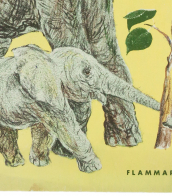

Аукционный дом «Жар-Птица»
Auction 17-1. Rare books, inscripts, manuscripts and photographs of the 17th-20th centuries.
Date: 27.11.2021 16:00 UTC +03:00
Number of lots in the catalog: 151
Lot 45 Палицын, А.И. Сказание о осаде Троицкаго Сергиева монастыря от поляков и Литвы; и о бывших потом в России мятежах, сочиненное онаго же Троицкаго монастыря келарем Аврамием Палицыным. — Изд. 2-е.
Auction 19. Rare books, inscriptions, paintings and drawings of the 18th-20th centuries. 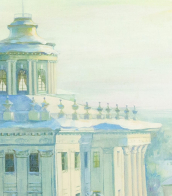

Аукционный дом «Жар-Птица»
Auction 19. Rare books, inscriptions, paintings and drawings of the 18th-20th centuries.
Date: 25.12.2021 17:15 UTC +03:00
Number of lots in the catalog: 195
Lot 18 Пушкин, А.С. Медный всадник: Петербургская повесть А.С. Пушкина / Ил. Александра Бенуа; ред. текста и ст. П.Е. Щеголева.
Auction 19. Rare books, inscriptions, paintings and drawings of the 18th-20th centuries. 

Аукционный дом «Жар-Птица»
Auction 19. Rare books, inscriptions, paintings and drawings of the 18th-20th centuries.
Date: 25.12.2021 17:15 UTC +03:00
Number of lots in the catalog: 195
Lot 188 Цыплакова, Т.Ю. Сад в усадьбе. 1988. Бумага, акварель. 45,7х36 см
Auction 19. Rare books, inscriptions, paintings and drawings of the 18th-20th centuries. 

Аукционный дом «Жар-Птица»
Auction 19. Rare books, inscriptions, paintings and drawings of the 18th-20th centuries.
Date: 25.12.2021 17:15 UTC +03:00
Number of lots in the catalog: 195
Lot 119 Балу, А. Учение о христианском непротивлении злу насилием: Пер. с англ. / Адин Балу; с предисл. И. Горбунова-Посадова.
Auction 16-2. Library of the Moscow Intellectual. Rare books of the XIX-XX centuries. 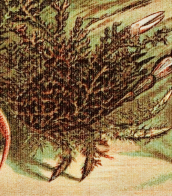

Аукционный дом «Жар-Птица»
Auction 16-2. Library of the Moscow Intellectual. Rare books of the XIX-XX centuries.
Date: 31.07.2021 17:30 UTC +03:00
Number of lots in the catalog: 294
Lot 193 Цыплакова, Т.Ю. Угол Большой Никитской и Садового. 1980-е. Бумага, офорт. 24,5х64 см.
Auction 16-3. Rare books, inscripts, arts and crafts and graphics of the 18th-20th centuries. 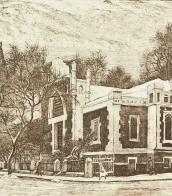

Аукционный дом «Жар-Птица»
Auction 16-3. Rare books, inscripts, arts and crafts and graphics of the 18th-20th centuries.
Date: 31.07.2021 20:00 UTC +03:00
Number of lots in the catalog: 198
Lot 185 Цыплакова, Т.Ю. Домик в усадьбе Кусково. 1977.
Бумага, акварель. 32х43,2 см.
Auction 19. Rare books, inscriptions, paintings and drawings of the 18th-20th centuries. 

Аукционный дом «Жар-Птица»
Auction 19. Rare books, inscriptions, paintings and drawings of the 18th-20th centuries.
Date: 25.12.2021 17:15 UTC +03:00
Number of lots in the catalog: 195
Lot 186 Цыплакова, Т.Ю. В усадьбе Берново. Музей Пушкина. 1988. Картон, акварель. 69,5х53,4 см.
Auction 19. Rare books, inscriptions, paintings and drawings of the 18th-20th centuries. 

Аукционный дом «Жар-Птица»
Auction 19. Rare books, inscriptions, paintings and drawings of the 18th-20th centuries.
Date: 25.12.2021 17:15 UTC +03:00
Number of lots in the catalog: 195
Lot 120 Васнецов, В.М. Всадник. 1914. Бумага, литография. 23,5x31,5 см.
Auction 20. Rare books, inscriptions and graphics of the 18th-20th centuries. 

Аукционный дом «Жар-Птица»
Auction 20. Rare books, inscriptions and graphics of the 18th-20th centuries.
Date: 12.02.2022 17:00 UTC +03:00
Number of lots in the catalog: 127
Lot 121 Исупов, А.В. (?) Въезд в усадьбу. 1920-е. Бумага, графит.кар. 27х38,3 см.
Auction 20. Rare books, inscriptions and graphics of the 18th-20th centuries. 

Аукционный дом «Жар-Птица»
Auction 20. Rare books, inscriptions and graphics of the 18th-20th centuries.
Date: 12.02.2022 17:00 UTC +03:00
Number of lots in the catalog: 127
Lot 199 Исупов, А.В. (?) Въезд в усадьбу. 1920-е. Бумага, графит.кар. 27х38,3 см.
Аукцион 21-1. Редкие книги, рукописи, фотографии и графика XVIII—ХХ вв. 

Аукционный дом «Жар-Птица»
Аукцион 21-1. Редкие книги, рукописи, фотографии и графика XVIII—ХХ вв.
Date: 04.09.2022 16:00 UTC +03:00
Number of lots in the catalog: 205
Lot 156 Шиванада, С.С. Сущность иогизма и садхана / Шри Суами Сивананда; пер. с англ. В. Ольшанского.
Аукцион 22. Редкие книги, инскрипты, рукописи, открытки и фотографии XVIII—XX вв. 

Аукционный дом «Жар-Птица»
Аукцион 22. Редкие книги, инскрипты, рукописи, открытки и фотографии XVIII—XX вв.
Date: 07.10.2023 17:15 UTC +03:00
Number of lots in the catalog: 238
Lot 209 Исупов, А.В. (?) Въезд в усадьбу. 1920-е. Бумага, графит.кар. 27х38,3 см.
Аукцион 22. Редкие книги, инскрипты, рукописи, открытки и фотографии XVIII—XX вв. 

Аукционный дом «Жар-Птица»
Аукцион 22. Редкие книги, инскрипты, рукописи, открытки и фотографии XVIII—XX вв.
Date: 07.10.2023 17:15 UTC +03:00
Number of lots in the catalog: 238
![[Мирбо, О.] Mirbeau, O. Le jardin des supplices / Par Octave Mirbeau [Сад пыток].](/assets/image/picture_1919770/0cf9a/i1isnqhaw7s1yqckrcsecxsmenf79roedjt3mmrzogs8cu41yd5vp07vvdmot01640797283jpg__fix_374_244.jpeg)
![[Мирбо, О.] Mirbeau, O. Le jardin des supplices / Par Octave Mirbeau [Сад пыток].](https://veryimportantlot.com/assets/image/picture_1919770/0cf9a/i1isnqhaw7s1yqckrcsecxsmenf79roedjt3mmrzogs8cu41yd5vp07vvdmot01640797283jpg__fix_374_244.jpeg)
![[Мирбо, О.] Mirbeau, O. Le jardin des supplices / Par Octave Mirbeau [Сад пыток].](/assets/image/picture_2303299/17989/snfmifsieahp0w7hb3sfiz43fy4atnmskxs6gonzt4ptnu25xf0uuxtrczfoqau1659663046jpg__fix_374_244.jpeg)
![[Мирбо, О.] Mirbeau, O. Le jardin des supplices / Par Octave Mirbeau [Сад пыток].](https://veryimportantlot.com/assets/image/picture_2303299/17989/snfmifsieahp0w7hb3sfiz43fy4atnmskxs6gonzt4ptnu25xf0uuxtrczfoqau1659663046jpg__fix_374_244.jpeg)
![[Мирбо, О.] Mirbeau, O. Le jardin des supplices / Par Octave Mirbeau [Сад пыток].](/assets/image/picture_3071289/ee05f/kcuaoqwz0inw7dgvrjwhsteee0swkbeqq2dkqpytdjad1r-cgryacniyrrb2l091692870324jpg__fix_374_244.jpeg)
![[Мирбо, О.] Mirbeau, O. Le jardin des supplices / Par Octave Mirbeau [Сад пыток].](https://veryimportantlot.com/assets/image/picture_3071289/ee05f/kcuaoqwz0inw7dgvrjwhsteee0swkbeqq2dkqpytdjad1r-cgryacniyrrb2l091692870324jpg__fix_374_244.jpeg)
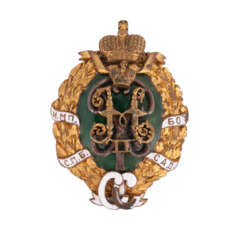

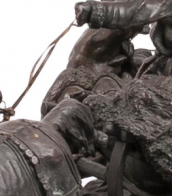
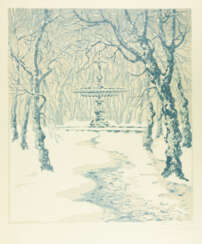

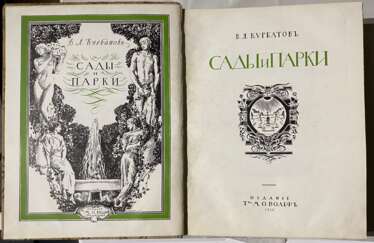

![Садовской, Б.А. Самовар: [Стихи] / Борис Садовской.](/assets/image/picture_1793595/c5758/1lalvqgqoiwuyobyyevbgzjxngefr0aewvr5r8niir9unhp4xorry6sbgllmup21635870581jpg__fix_374_244.jpeg)
![Садовской, Б.А. Самовар: [Стихи] / Борис Садовской.](https://veryimportantlot.com/assets/image/picture_1793595/c5758/1lalvqgqoiwuyobyyevbgzjxngefr0aewvr5r8niir9unhp4xorry6sbgllmup21635870581jpg__fix_374_244.jpeg)
